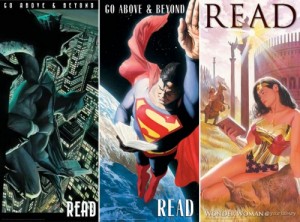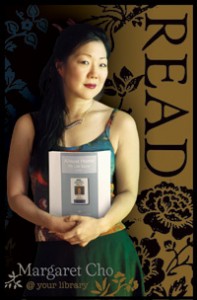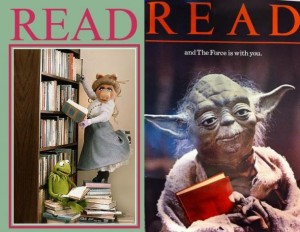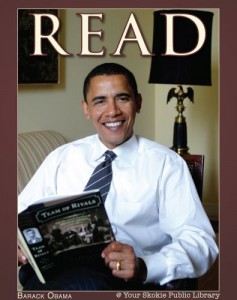by Jas Faulkner
It was the mid-eighties and I was wandering through the stacks of the old tower library at Memphis State University with a friend when she first pointed him out to me. He was hanging out at the end of a shelf and we couldn’t help but notice as the shaft of hot Delta sun streaming from a nearby window moved across his flowing blond mane, illuminating the dark period clothing and smoldering gaze he was wearing. It was a look that seemed to dare us to ask the title of the book he cradled in his hand like the tender heart of a hyperventilating early twentysomething.
“We HAVE to see ‘The Bride’!”
I agreed with her as I gathered up my library loot for the weekend: Grotowski’s “Towards a Poor Theatre”, a Grantland Rice anthology, Turner’s “Forest of Symbols”, Schechner’s “Performance Theory, a collection of Stoppard’s radio plays and the lone Vonnegut I hadn’t read yet.* All of that moody male prettiness concentrated at the end of the shelf was just one more distraction I didn’t need.
Before we made our way to the checkout desk, we took a side trip to the fiction floor, where my friend added a copy of Mary Shelley’s Frankenstein: or, the Modern Prometheus to her stack of books.
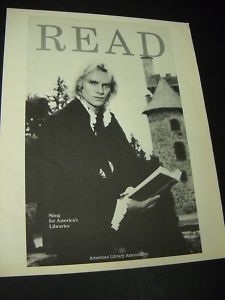
Mission accomplished. The American Library Association’s “Read” campaign inspired yet another person to pick up a book for the pleasure of getting lost in a good story. The romantic hanger-on in question was not some graduate student with a penchant for costumes and affecting a thousand mile stare in hopes of getting female attention. He was musician/actor Sting as he appeared in the 1985 film adaptation of Shelley’s horror masterpiece and that year’s collection of posters offered by the ALA.
I asked a retired school librarian in Shreveport, Louisiana if she remembered the “Read” posters in general and the Sting poster in particular.
“We went through at least four of them the year it came out. We hung the last one we bought on the office door behind the checkout counter. It was there for a little over a week before someone’s patience paid off and they caught us in an odd moment when everyone was shelving or helping a student. Oh! I’m wrong. We did buy one more that we hung on the wall inside the office. I’m not even sure it was visible to visitors, which kind of defeats the purpose.”
Was the inclusion of the ALA’s poster campaign a nuisance or a boon to librarians trying to encourage reluctant readers?
“Actually, we loved them. It was fun for us to pore through the graphics section of the catalog and pick out who we would be looking at for the next few months. All of the librarians got one pick and the student workers were given a vote. We would have a ceremony where we revealed the new posters, including the students’ choice winners.”
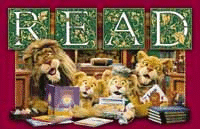 Female readers’ attempts to stand so close to Sting might have become a part of library lore, but he was not the first celebrity to appear on a poster for the ALA. That distinction belongs to Dr. Bill Cosby, who was the first real live human to hold a book (Treasure Island) and smile for the camera in 1985 for the “Read” campaign. Prior to that, the most famous face to grace library walls on behalf of the initiative was Mickey Mouse in 1980. In its thirty-six year history, ALA’s “Read” program has featured roughly 200 celebrities on 182 different posters as spokespeople. This does not even include the posters featuring celebrities who fall outside the Venn diagram section for famous humans. Yoda, Miss Piggy and Kermit, Wishbone, Neil Gaiman’s Sandman, and the Between the Lions Crew have all done their part to remind everyone that reading can be fun.
Female readers’ attempts to stand so close to Sting might have become a part of library lore, but he was not the first celebrity to appear on a poster for the ALA. That distinction belongs to Dr. Bill Cosby, who was the first real live human to hold a book (Treasure Island) and smile for the camera in 1985 for the “Read” campaign. Prior to that, the most famous face to grace library walls on behalf of the initiative was Mickey Mouse in 1980. In its thirty-six year history, ALA’s “Read” program has featured roughly 200 celebrities on 182 different posters as spokespeople. This does not even include the posters featuring celebrities who fall outside the Venn diagram section for famous humans. Yoda, Miss Piggy and Kermit, Wishbone, Neil Gaiman’s Sandman, and the Between the Lions Crew have all done their part to remind everyone that reading can be fun.
Some posters feature familiar media darlings such as Oprah Winfrey, who is shown seated comfortably in front of a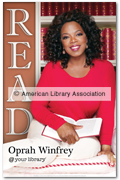 shelf, smiling to us as if we have just caught her in the middle of a return visit to Zora Neale Hurston’s “Their Eyes Were Watching God” and Alan Rickman, who looks charmingly caught in the act of reading J.D. Salinger’s notorious teen whingefest. Other posters feature actors who have embodied characters from popular books that have been turned into even more popular movies. The principals from the Harry Potter series and cast members from Peter Jackson’s Lord of the Rings Trilogy have made appearances both as themselves and in character. Rachel Johnson, Director of Graphics for the ALA describes how each year’s subjects are chosen:
shelf, smiling to us as if we have just caught her in the middle of a return visit to Zora Neale Hurston’s “Their Eyes Were Watching God” and Alan Rickman, who looks charmingly caught in the act of reading J.D. Salinger’s notorious teen whingefest. Other posters feature actors who have embodied characters from popular books that have been turned into even more popular movies. The principals from the Harry Potter series and cast members from Peter Jackson’s Lord of the Rings Trilogy have made appearances both as themselves and in character. Rachel Johnson, Director of Graphics for the ALA describes how each year’s subjects are chosen:
“ALA Graphics, part of ALA’s publishing department, receives lots of suggestions for celebrities from librarians, teachers, readers and fans. We like to consider a variety of stars including movie and TV stars, comedians, athletes, musicians, innovators, heroic figures. We also consider a variety of ethnic and cultural backgrounds to reach the diverse populations libraries serve. We track all suggestions to monitor their popularity among library staff, students, and patrons, and if demand for a celebrity emerges, we add the name to the list. With all of this information at hand, we select iconic celebrities who we feel will best encourage reading, literacy, and life-long learning among children, teens, and adults alike. The second part of the process can be considerably more difficult—contacting representatives for each celebrity and getting them to sign on.”
It would seem that being asked to appear on an ALA poster would be an honor, not to mention a nice little boost of free PR. Not everyone who is asked has that response.
“It may surprise you to know that not all the personalities we contact agree to participate, as many are contacted so frequently for celebrity appearances. We often receive suggestions for celebrities that we have contacted on numerous occasions, but can’t persuade to participate.”
Okay, not everybody gets how cool these posters are or how they turn appealing public figures into comrades in arms in the struggle to save the written word, heroes who understand the love of books, and tasty nip for smarter cats. It’s obvious from looking at the posters that the people who do agree to pose for them share a love for reading with their audience. Still, was the rabid devotion to Sting’s visage an isolated blip in the program’s timeline? Which poster has proven to be the most popular? Ms Johnson is rather circumspect about the subject:
” It’s hard to pick out just one as the most popular, but several stand out as best sellers over the years: Orlando Bloom, Keira Knightley, and Twilight.”
The process must be working, because Johnson says the feedback she gets is positive. The interactive aspect of the project is something that keeps everyone connected. Suggestions from librarians, readers and members of the ALA are taken into account and the people who participate in the selection at all levels are not forgotten:
“I’m always thrilled when we receive a suggestion and we’re able to deliver on it. When we unveiled the GLEE READ Poster and Bookmarks I emailed the librarian who had suggested it and got the following response: ‘I’m thrilled, and my students will be as well. Once again, ALA is right on trend!’ Those words made my day.”
The posters are a fixture in most libraries and have found their way into the hands of collectors, time capsules, and facilities overseas where a touch of the familiar is a comforting reminder of home. For the ALA, it is part of their effort to encourage everyone to pick up a book. With so many people getting passionately involved, the ALA has taken steps to put everyone in the picture.
“In 2004 ALA Graphics launched the first READ CD which gave libraries, schools, and other not-for-profit entities a trademark compliant way to create their own READ posters and bookmarks with local celebrities, patrons, students, and staff. Since then we’ve added the READ CD 2, READ CD Box Set, and most recently, the READ DVD Genres & Subjects.”
That’s right, intellectual property law enthusiasts. The American Library Association has owned the rights to “Read” as a registered trademark since 1976. Like the superheroes who sometimes appear on their posters, they’re using this legal superpower for good. In a time when many public libraries are dependent on private donations, proceeds from fundraisers and the dwindling grants available to such organisations, the sales from ALA’s educational and promotional materials go toward funding library science research and the continued growth of the discipline.
Want to offer your support? Even if you’re not an ALA member, you can help out by visiting the ALA Store. If you think you and the readers in your life ought to be in pictures, you can visit the READ Design Studio information page at http://www.alastore.ala.org/readdesignstudioinfo/.
*…and a partridge in a pear tree. Ask me to place anything in a temporal context and I will always manage it based on what I was reading and listening to and who was president.

